
About Proportional Representation
- The Proportional Representation (PR) system ensures representation of all parties based on their vote share.
- The most commonly used PR system is the ‘party list PR’ where voters vote for the party (and not individual candidates) and then the parties get seats in proportion to their vote share.
First Past the Post System
- India currently uses the First Past the Post (FPTP) system, where the candidate with the most votes in a constituency wins.
- The FPTP system is simple and provides stability to the executive, but it can lead to unrepresentative governments.
Mixed Member Proportional Representation (MMPR)
- To balance stability and proportionate representation, the Mixed Member Proportional Representation (MMPR) system can be considered.
- Under MMPR, there is one candidate elected through FPTP from each territorial constituency, and additional seats are allocated to parties proportionally based on their vote share.
2. WTO’s SPS Agreement
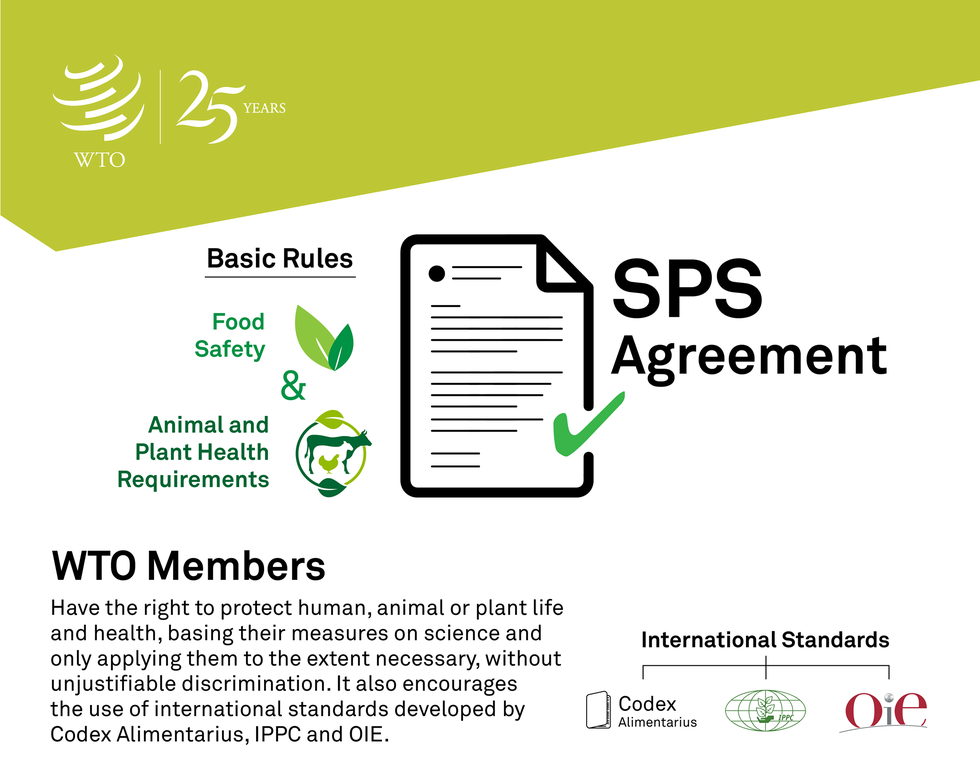
About SPS Agreement
- The Agreement on the Application of Sanitary and Phytosanitary Measures (SPS Agreement) is a treaty of the World Trade Organization (WTO) that came into force with the establishment of the WTO on January 1, 1995.
- It sets out the basic rules for food safety and animal and plant health standards.
Key Provisions
- Scientific basis: SPS measures must be based on scientific principles and sufficient evidence, except for provisional measures.
- Harmonization: Members are encouraged to align SPS measures with international standards set by bodies like Codex Alimentarius, OIE, and IPPC.
- Equivalence: SPS measures of other countries should be accepted as equivalent if they achieve the same level of protection.
- Risk assessment: Countries must conduct risk assessments to determine the appropriate level of protection, considering the impacts of pests or diseases.
- Regionalization: Members should recognize pest- or disease-free areas and areas of low prevalence, even if within a single country or group of countries.
- Transparency: Countries must notify changes in SPS measures and provide regulatory information through the WTO’s SPS notification system.
- Dispute Resolution: These disputes can be taken to the WTO’s Dispute Settlement Body (DSB) if consultations fail.
3. Cabinet Committee on Security (CCS)
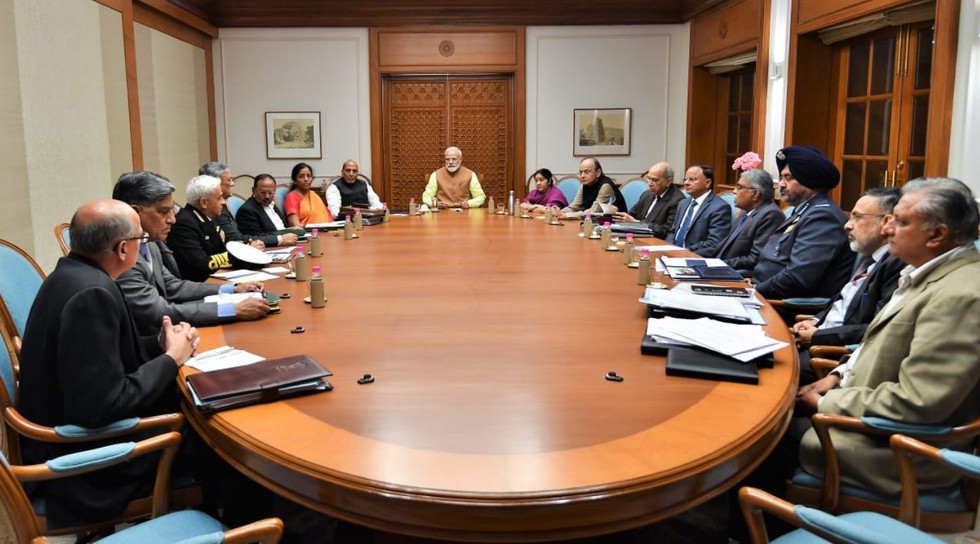
About Cabinet Committee on Security (CCS)
- It is headed by the Prime Minister.
- The Committee discusses, debates, and is the apex body when it comes to the appointments of the officials in the national security bodies.
- It also makes all the important decisions on defence policy and expenditure and, generally, all matters of India’s security.
- Members: PM, Ministers of Defence, Home Affairs, Finance and External Affairs.
- Functions:
- Deals with all the issues related to the defence and security of India.
- The CCS deals with all issues related to the law and order and national security of India.
- It discusses different initiatives to take to enhance the national security of India.
- It also deals with policy matters of foreign affairs which may have a bearing on internal or external security implications, including cases relating to agreements with other countries on security-related issues.
- The Committee discusses the political issues which can impact the security of our nation.
What are Cabinet Committees?
- Cabinet Committees are extra-constitutional, meaning, they are not mentioned in the Indian Constitution.
- They are partly designed to reduce the burden on the Union Cabinet by allowing smaller groups of ministers to make decisions on specific policy areas.
- They are constituted or reconstituted when a new government takes over or the Cabinet undergoes a reshuffle.
- There are a total of 8 cabinet committees:
- Cabinet Committee on Economic Affairs.
- Cabinet Committee on Political Affairs.
- Cabinet Committee on Investment and Growth.
- Cabinet Committee on security.
- Cabinet Committee on Parliamentary Affairs.
- Cabinet Committee on Employment and Skill Development.
- Cabinet Committee on accommodation.
- Appointments Committee of the Cabinet
4. Quantum Data

About Quantum Data
- It refers to information that is stored and processed using the principles of quantum mechanics.
- Unlike classical data, which is represented by binary states (0s and 1s), quantum data is represented by quantum bits or qubits.
- Qubits can exist in multiple states simultaneously due to a property called superposition, and they can be entangled with other qubits, allowing for a kind of interconnectedness and correlation that classical bits cannot achieve.
Applications of Quantum Data:
- Cryptography: Quantum key distribution (QKD) leverages the principles of quantum mechanics to create secure communication channels that are theoretically immune to eavesdropping.
- Optimization problems: Quantum algorithms can potentially solve complex optimization problems more efficiently than classical algorithms.
- Simulating Quantum Systems: Quantum computers can simulate other quantum systems, which is useful for understanding chemical reactions, materials science, and fundamental physics.
- Machine Learning: Quantum machine learning algorithms could handle large datasets and complex models more efficiently.
5. Cascadia Subduction Zone
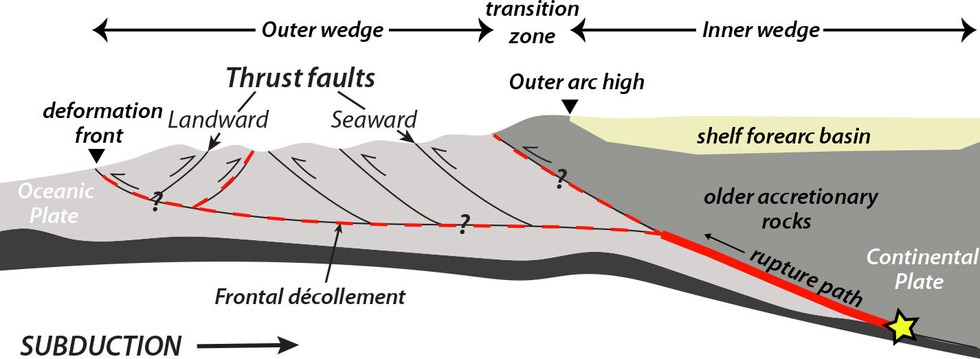
About Cascadia Subduction Zone
- It is a major geological feature located off the west coast of North America, stretching from northern California to southern British Columbia.
- It is an active convergent boundary where the Juan de Fuca Plate is subducting beneath the North American Plate.
- This subduction process has significant implications for seismic activity in the region.
Earthquake and Tsunami Risks
- The CSZ is capable of producing massive earthquakes, including those of magnitude 9.0 or greater, which can generate tsunamis reaching heights of 100 feet or more.
- A similar fault off Japan triggered the devastating 2011 Fukushima nuclear disaster.
6. Operation Bluestar
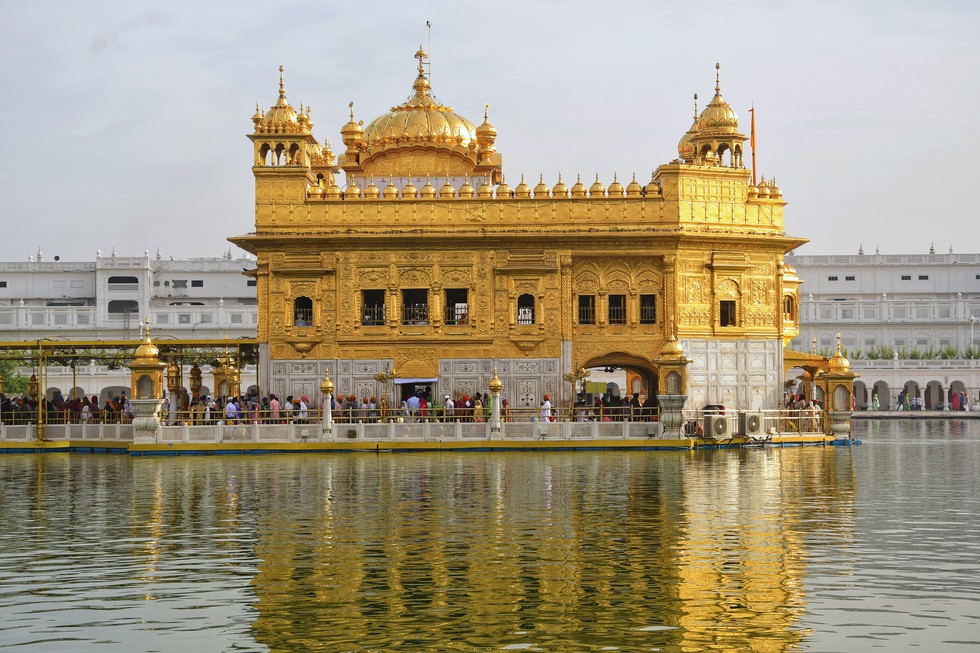
About Operation Bluestar:
- It was an Indian military operation in June 1984 ordered by Prime Minister Indira Gandhi to root out a group of militant Sikh separatists who had occupied the Golden Temple in Punjab’s Amritsar, the Sikhs’ holiest shrine.
- The leader of the group was Jarnail Singh Bhindranwale, a Sikh fundamentalist, former head of the Sikh seminary Damdami Taksal, and a key figure in the then-emerging separatist Khalistan movement.
- The military operation was planned to regain control of the complex while minimizing civilian casualties.
- Timeline of the operation:
- June 1-3, 1984: The operation began on June 1, 1984, with the deployment of Indian Army troops around the Golden Temple complex. Bhindranwale and his followers fiercely resisted the army's advance, leading to intense gun battles.
- June 3-6, 1984: The Indian Army intensified its assault on the complex, using heavy artillery, tanks, and helicopters. The fighting resulted in extensive damage to the Akal Takht, the highest temporal seat of Sikh authority, as well as other parts of the Golden Temple.
- June 6, 1984: The operation officially concluded on June 6, 1984, when the Indian Army gained control of the Golden Temple complex.
- While the army was successful in achieving its goals, some Sikhs were outraged as they saw the operation as an attack on their faith.
- According to the Indian government, about 400 people were killed, including 87 soldiers.
- Operation Blue Star led to the assassination of Prime Minister Indira Gandhi, who was killed by her Sikh bodyguards in revenge five months after the operation.
7. Abyssal Plains
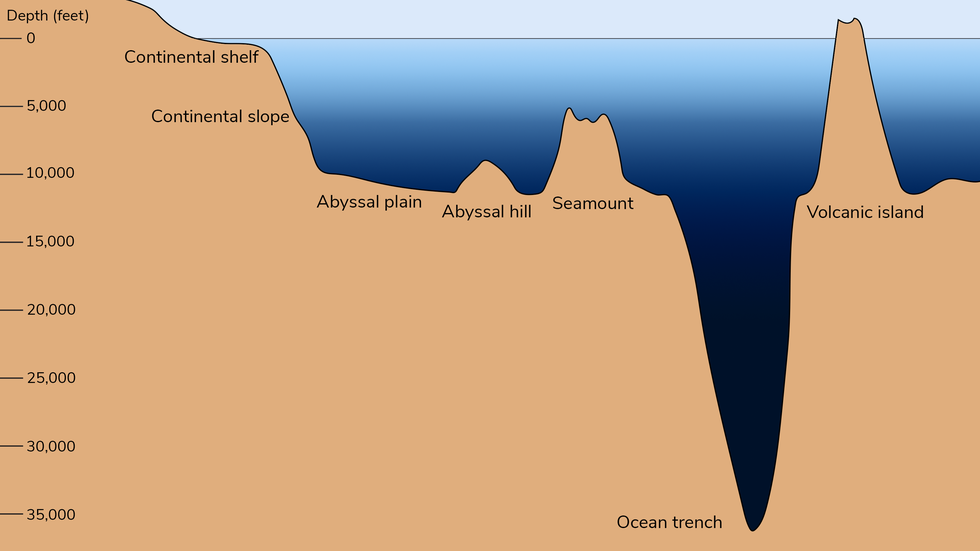
About Abyssal Plains:
- The term ‘abyssal plain’ refers to a flat region of the ocean floor, usually at the base of a continental rise.
- Depth variation is usually only as much as 10 to 100 centimeters per kilometer of horizontal distance.
- They can range as far as thousands of kilometers, forming huge plateaus beneath the sea.
- They are found on the ocean floor, usually off the coast of major continental coastlines.
- However, there are significantly more abyssal plains in the Atlantic Oceanthan in any other.
- Some can be found within the Indian Ocean, but very few exist in areas within the Pacific Ocean.
- Approximately 40% of Earth’s Ocean floor is covered by abyssal plains.
- The largest Abyssal plain on Earth is called the Sohm plain. This plain can be found in the North Atlantic Ocean. It is 900,000 square kilometres.
- Abyssal plains occur at depths greater than 6,500 feet (2,000 meters) below sea level and are underlain by oceanic crust composed primarily of basalt, a dark-colored volcanic rock rich in iron- and magnesium-silicate minerals.
- The basalt is covered by layers of sediment deposited by deep ocean turbidity currents, the shells of marine plants and animals that have fallen down from the ocean’s upper levels, or a combination of both.
- Other minor components of abyssal plain sediment include wind-blown dust, volcanic ash, chemical precipitates and occasional meteorite fragments.
- Scattered across abyssal plains are abyssal hills and underwater volcanic peaks called seamounts.
- On the other side of the plain is usually an oceanic trench, where the seafloor dramatically plummets.
8. Key Facts about Mount Fuji
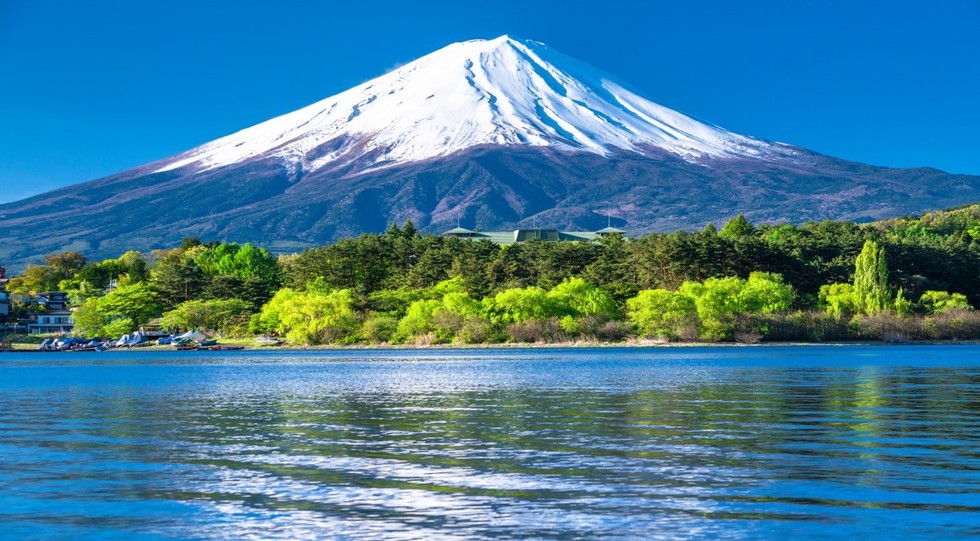
About Mount Fuji:
- It is the tallest peak in Japan, standing at 3,776 meters.
- It is situated only 100 km west of the Japanese capital city of Tokyo on Honshu Island, near the Pacific Coast.
- Unlike other famous high-elevation mountains in the world, Mt. Fuji is not part of a large mountain range.
- It is a stratovolcanothat has been dormant since its last eruption, in 1707, but is still generally classified as active by geologists.
- It has a prominent summit crater and is constructed from innumerable basaltic lava flows, each a few meters thick.
- It has a smooth slope and a wide, spreading base, creating a beautiful skyline as it narrows to a magnificent peak.
- It is said that the main cause of Mt. Fuji's volcanic activity is the Pacific Plate sinking under the bottom of the Philippine Plate.
- Despite its active volcanic nature, Fuji’s summit is covered in snow most times of the year.
- The UNESCO designated Mount Fuji a World Heritage sitein 2013.
9. Suhelwa Wildlife Sanctuary (SWS)

About Suhelwa Wildlife Sanctuary (SWS):
- Location: It is located in the Shravasti, Balrampur, and Gonda districts of Uttar Pradesh.
- The forest of SWS was owned by the Maharaja of Balrampur before the implementation of the Zamindari Abolition Act 1952 and was known as Balrampur Estate.
- It was declared a Wildlife Sanctuary in 1988.
- Sprawling an area of 452 sq km, this sanctuary is a strip of land, approximately, 120 km long from the east to west and 6-8 km wide.
- The Sohelwa Wildlife Division is situated on the Indo-Nepal International Border.
- It is one of the important places in the Bhabar-Terai Ecosystem area,which is rich in biodiversity.
- The Tharu tribe, having mongoloid features, have been residents of this area since long.
- Vegetation: A mixture of deciduous and semi-evergreen woodlandsdefines the sanctuary.
- Flora: Bahera, Phaldu, Sal, Teak, Dhamina, Jamun, Shisham, Jigna, Haldu, Asna, and Khair are some of the most common trees found in SWS.
- Fauna:
- Tigers, Leopard, Cheetal, Bear, Wolfe, Hare, Jackal, Wild Boar, Sambar, Mankey, Langoor, Python, Otters, etc. can be commonly sighted.
- A number of birds like Black Partridge, Quails, Peacocks, Kingfishers, Bulbuls, Mynahs, Eagles, Nightingales, Cuckoo, and Owls, etc. also inhabit the forest area.
10. World Oceans Day 2024
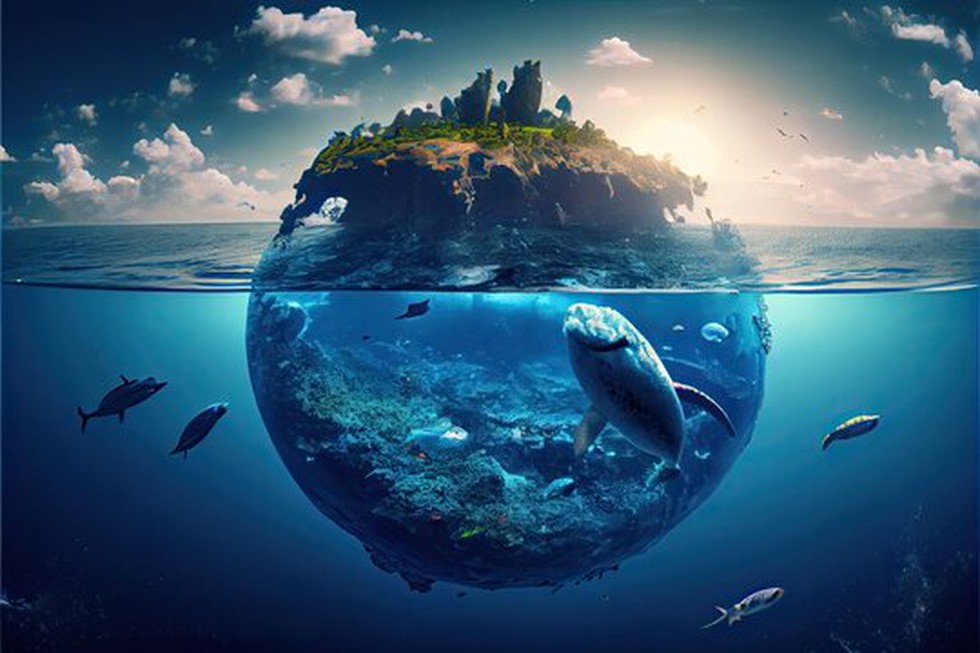
About World Oceans Day:
- It is celebrated annually on June 8.
- This day aims to raise awareness about the critical role oceans play in our planet's ecosystem.
- Oceans cover more than 70% of the Earth's surface and are crucial for regulating the climate, providing food and oxygen, and supporting a diverse range of marine life.
- They are also essential for human livelihoods, supporting industries such as fishing, tourism, and shipping.
- The event encourages global collaboration for sustainable ocean management, addressing issues such as pollution, overfishing, and climate change.
- The theme for 2024 World Oceans Day is “Awaken New Depth”.
- History:
- The concept of World Oceans Day was first proposed in 1992 at the Earth Summit in Rio de Janeiro, Brazil.
- This global event, officially known as the United Nations Conference on Environment and Development (UNCED), highlighted the critical role oceans play in sustaining life on Earth.
- The idea gained momentum over the years, leading to its official recognition by the United Nations in 2008.
- The UN General Assembly designated June 8 as World Oceans Day, aiming to raise awareness about the importance of oceans and the urgent need to preserve them.
- Every year, the UN Division for Ocean Affairs and the Law of the Sea organises events to create public awareness.


























































































































































.png)
.png)
.png)
.png)
.png)


.png)
.png)
.png)





.png)
.png)






.png)
.png)
.png)
.png)
.png)
.png)
.png)
.png)
.png)

.png)







.png)
.png)


.png)
.png)
.png)


.png)

.png)
.png)





.jpg)

.png)
.png)


.png)

.png)
.png)
.png)

.jpg)

.jpg)


.png)

.png)
.png)
.png)
.png)
.png)
.png)
.png)
.png)
.png)
.png)




.png)

.png)





.png)
.png)
.png)
.png)
.png)
.png)
.png)
.png)
.png)
.png)
.jpg)
.jpg)

.png)
.png)
.png)
.png)
.png)
.png)
.png)
.png)
.png)
.png)
.png)
.png)
.png)
.png)
.png)
.png)
.png)
.png)
.png)
.png)
.png)
.png)



.png)
.png)

.jpg)
.jpg)


.jpg)
.jpg)
.jpg)
.jpg)
.jpg)

.jpg)








.jpg)
.jpg)
.jpg)
.jpg)
.jpg)

















.jpg)
.jpg)







.jpg)


















.jpg)
.jpg)






























































































.jpg)
.jpg)


























.jpg)

.jpg)










.jpg)








.jpg)




.jpg)










.jpg)


















.jpg)












































.jpg)














.jpg)
.jpg)
.jpg)





.jpg)

.jpg)
.jpg)





































































.jpg)


































.jpg)
.jpg)
















































.jpg)












.jpg)


.jpg)




.jpg)
.jpg)
.jpg)

.jpg)
.jpg)
.jpg)
.jpg)

.jpg)
.jpg)
.jpg)

.jpg)
.jpg)
.jpg)
.jpg)
.jpg)
.jpg)
.jpg)
.jpg)

.jpg)


.jpg)
.jpg)
.jpg)
.jpg)
.jpg)
.jpg)
.jpg)
.jpg)
.jpg)
.jpg)











.jpg)
.jpg)





.jpg)
.jpg)
.jpg)
























.jpg)
























.jpg)









.jpg)
.jpg)







.jpg)
.jpg)









































.jpg)
.jpg)
.jpg)
.jpg)
.jpg)

.jpg)
.jpg)
.jpg)
.jpg)
.jpg)


.jpg)
.jpg)
.jpg)
.jpg)
.jpg)

.jpg)
.jpg)
.jpg)
.jpg)
.jpg)
.jpg)
.jpg)
.jpg)
.jpg)
.jpg)
.png)

.png)
.png)

.png)
.png)
.png)
.png)


.jpg)
.jpg)

.jpg)
.jpg)
.jpg)

.png)
.png)
.png)
.png)
.png)
.png)
.png)

.png)
.png)
.png)
.png)
.png)
.png)
.png)
.png)
.png)
.png)





































































-min.png)



.png)




.png)








































